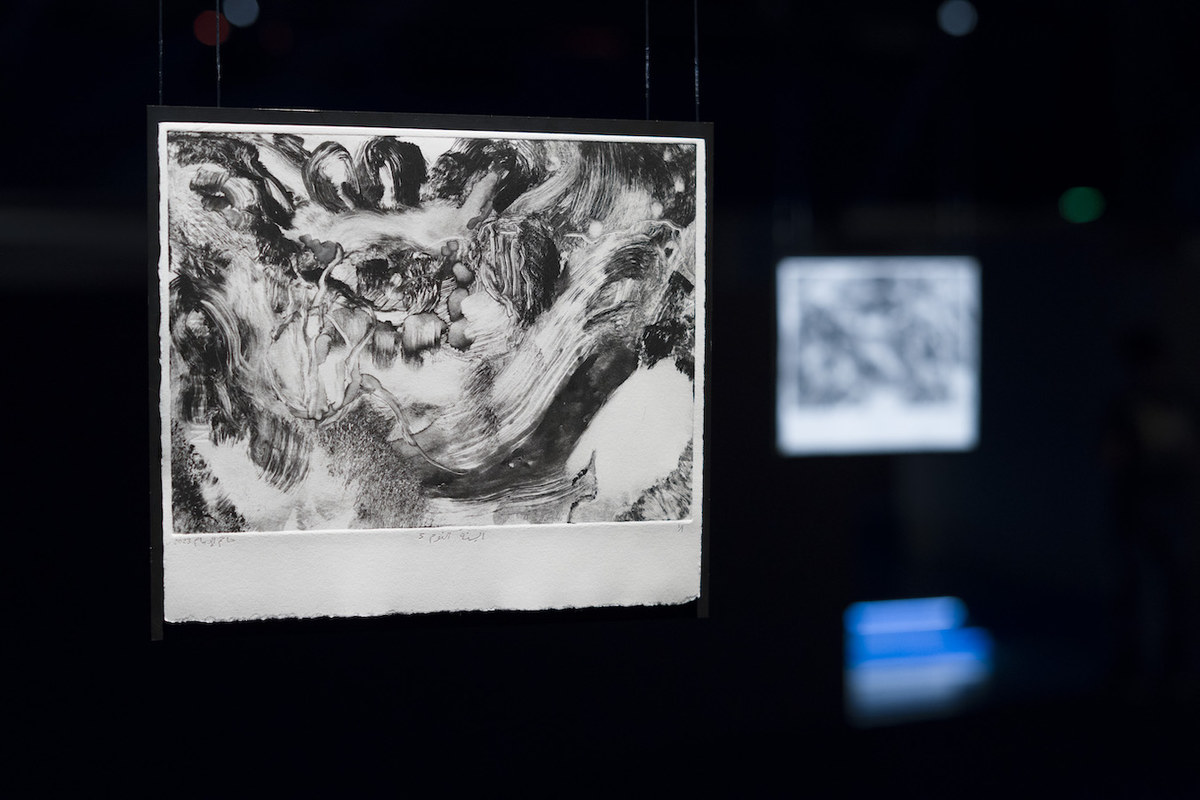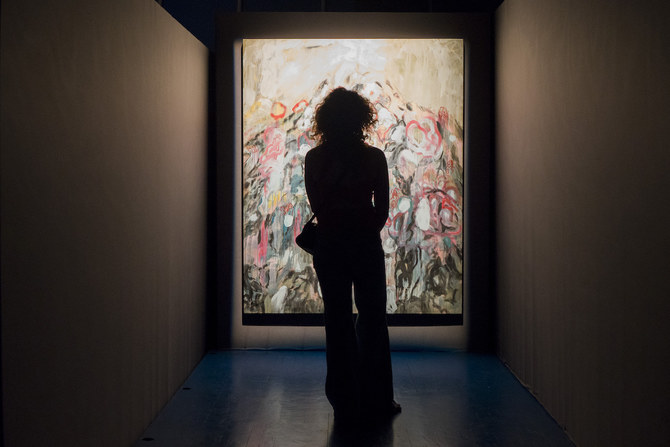DUBAI: A Lebanese painter has put a new perspective on showcasing his visual art.
Instead of displaying his works in a museum, gallery, or cultural center, Hatem Imam’s latest exhibition is taking place in the dimly lit interior of Beirut theater Metro Al-Madina.
The theater recently relocated there as part of an initiative to diversify its cultural activities with events such as Imam’s art show.

Metro Al-Madina, Hatem Imam. (Paul Gorra)
He told Arab News: “The paintings and prints are not displayed in the typical manner, in a white cube and side by side.
“The scenography, lighting, and sound have a performative aspect that felt more at home in a theater space than an art gallery. The Metro family generously accepted to experiment with me on this show.”
Running until July 20, the exhibition, produced by the non-profit gallery Art Design Lebanon, is titled “Slumber’s Tongues,” and showcases a selection of more than 20 abstract artworks that Imam has worked on for the past six months.

Metro Al-Madina, Hatem Imam. (Paul Gorra)
He said: “The work looks at language, and at different tongues with which we communicate. In front of abstract art, our brains strain to find meaning, to attach to familiar forms, to fill in the gaps.”
Imam, who has a background in graphic design and fine arts, has been particularly inspired by the printmaking skills of European masters Rembrandt, Whistler, and Degas, and he described his painting style as “sitting between abstraction and figuration.”
He added: “My scenes could look like depictions of land, natural formations, rocks, streams, and waterfalls, but they are always simultaneously undone by elements that break the illusion of space.

Metro Al-Madina, Hatem Imam. (Paul Gorra)
“Perspective is hinted at but never fully formed. In many cases the viewer is left wondering if what they are seeing is an extreme closeup or in fact an aerial view.”
Imam’s compositions are sometimes made of decaying forms but thrive with intense colors. One aspect of his show brings to light “concerns that pervaded his process” in a city that continues to deal with struggles on a daily basis.
He said: “One of the main questions that haunts painters is the relevance of painting today. Where are we in relation to painting? And to be more specific, where are we, the people who live in this ravaged and devastated Beirut, in relation to abstract painting?”











